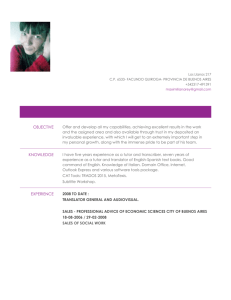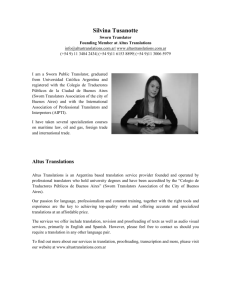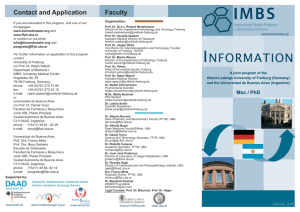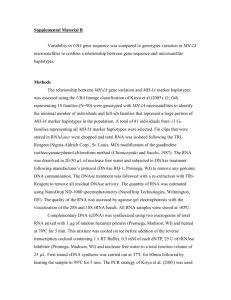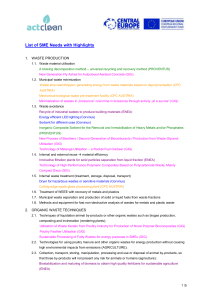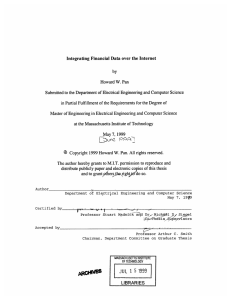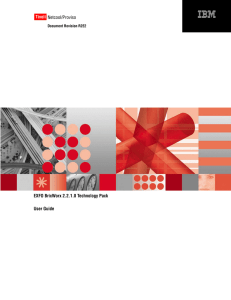using high spatial resolution satellite imagery to detect fine scale
advertisement
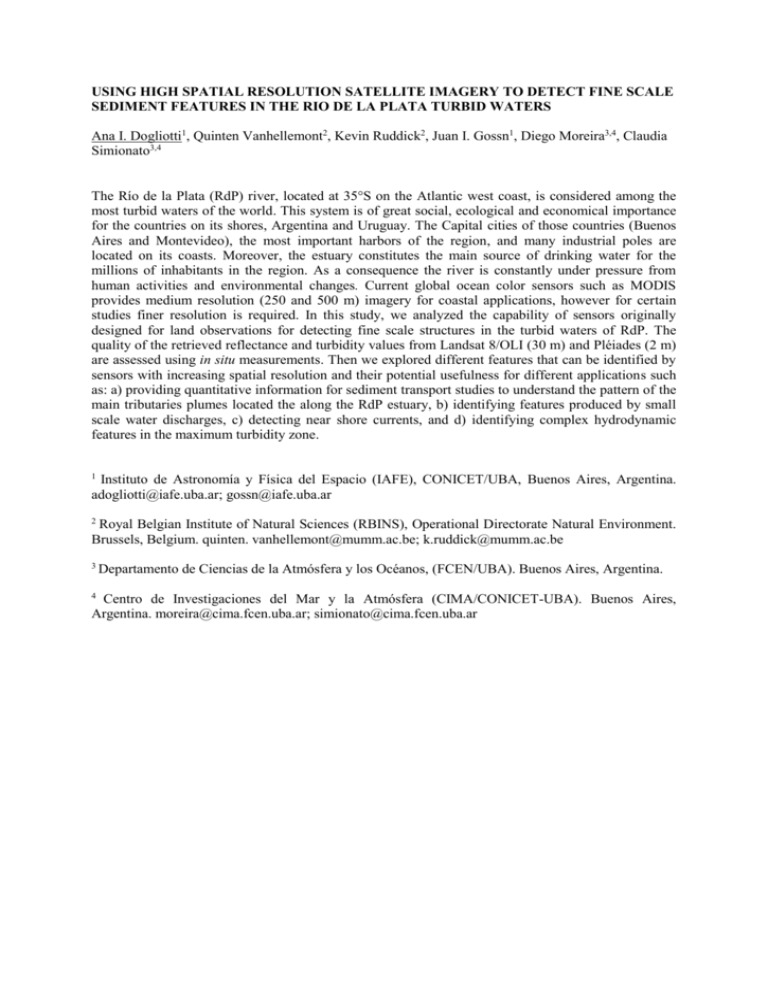
USING HIGH SPATIAL RESOLUTION SATELLITE IMAGERY TO DETECT FINE SCALE SEDIMENT FEATURES IN THE RIO DE LA PLATA TURBID WATERS Ana I. Dogliotti1, Quinten Vanhellemont2, Kevin Ruddick2, Juan I. Gossn1, Diego Moreira3,4, Claudia Simionato3,4 The Río de la Plata (RdP) river, located at 35°S on the Atlantic west coast, is considered among the most turbid waters of the world. This system is of great social, ecological and economical importance for the countries on its shores, Argentina and Uruguay. The Capital cities of those countries (Buenos Aires and Montevideo), the most important harbors of the region, and many industrial poles are located on its coasts. Moreover, the estuary constitutes the main source of drinking water for the millions of inhabitants in the region. As a consequence the river is constantly under pressure from human activities and environmental changes. Current global ocean color sensors such as MODIS provides medium resolution (250 and 500 m) imagery for coastal applications, however for certain studies finer resolution is required. In this study, we analyzed the capability of sensors originally designed for land observations for detecting fine scale structures in the turbid waters of RdP. The quality of the retrieved reflectance and turbidity values from Landsat 8/OLI (30 m) and Pléiades (2 m) are assessed using in situ measurements. Then we explored different features that can be identified by sensors with increasing spatial resolution and their potential usefulness for different applications such as: a) providing quantitative information for sediment transport studies to understand the pattern of the main tributaries plumes located the along the RdP estuary, b) identifying features produced by small scale water discharges, c) detecting near shore currents, and d) identifying complex hydrodynamic features in the maximum turbidity zone. 1 Instituto de Astronomía y Física del Espacio (IAFE), CONICET/UBA, Buenos Aires, Argentina. adogliotti@iafe.uba.ar; gossn@iafe.uba.ar 2 Royal Belgian Institute of Natural Sciences (RBINS), Operational Directorate Natural Environment. Brussels, Belgium. quinten. vanhellemont@mumm.ac.be; k.ruddick@mumm.ac.be 3 4 Departamento de Ciencias de la Atmósfera y los Océanos, (FCEN/UBA). Buenos Aires, Argentina. Centro de Investigaciones del Mar y la Atmósfera (CIMA/CONICET-UBA). Buenos Aires, Argentina. moreira@cima.fcen.uba.ar; simionato@cima.fcen.uba.ar


